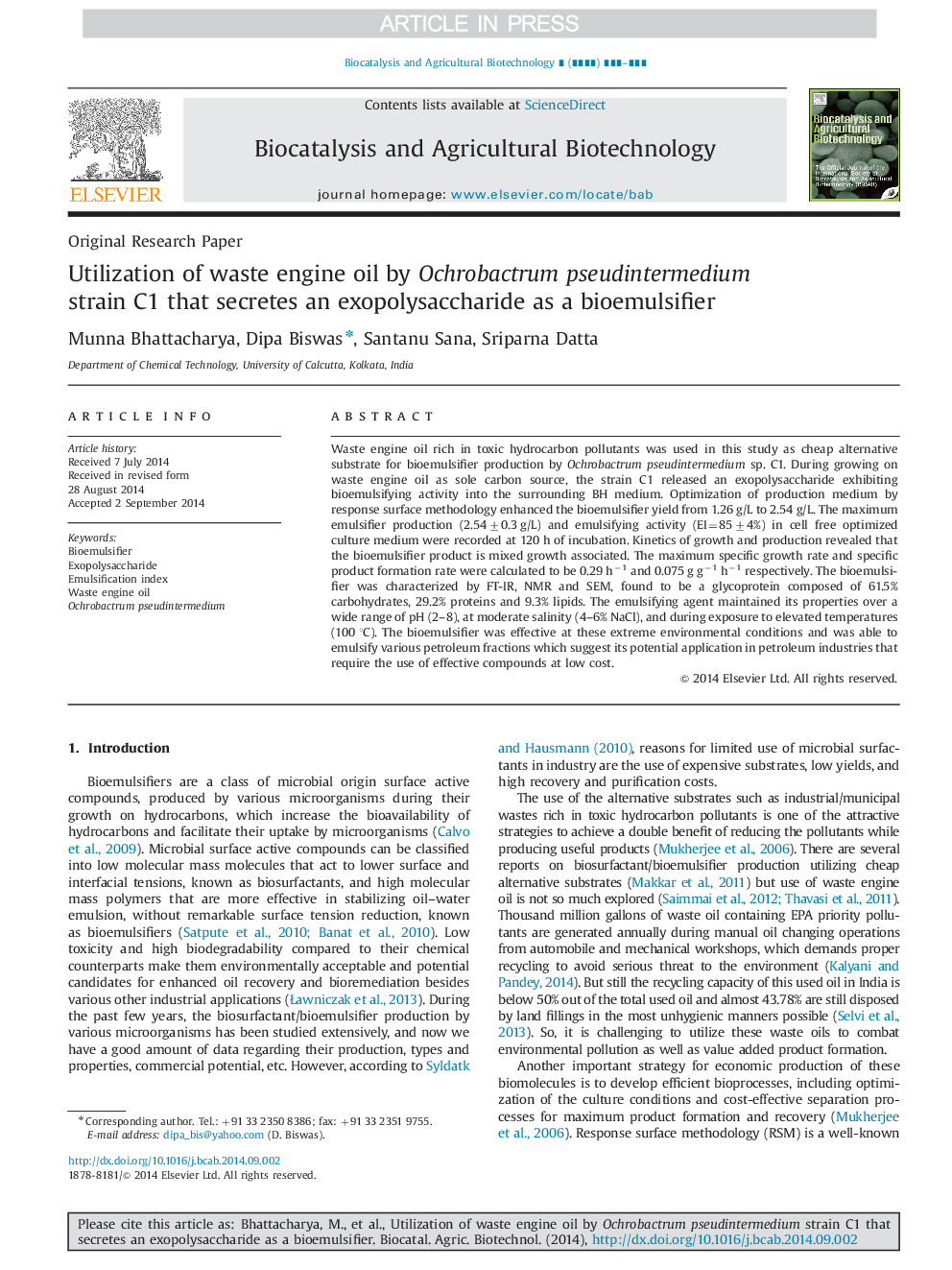| Article ID | Journal | Published Year | Pages | File Type |
|---|---|---|---|---|
| 10884482 | Biocatalysis and Agricultural Biotechnology | 2014 | 10 Pages |
Abstract
Waste engine oil rich in toxic hydrocarbon pollutants was used in this study as cheap alternative substrate for bioemulsifier production by Ochrobactrum pseudintermedium sp. C1. During growing on waste engine oil as sole carbon source, the strain C1 released an exopolysaccharide exhibiting bioemulsifying activity into the surrounding BH medium. Optimization of production medium by response surface methodology enhanced the bioemulsifier yield from 1.26 g/L to 2.54 g/L. The maximum emulsifier production (2.54±0.3 g/L) and emulsifying activity (EI=85±4%) in cell free optimized culture medium were recorded at 120 h of incubation. Kinetics of growth and production revealed that the bioemulsifier product is mixed growth associated. The maximum specific growth rate and specific product formation rate were calculated to be 0.29 hâ1 and 0.075 g gâ1 hâ1 respectively. The bioemulsifier was characterized by FT-IR, NMR and SEM, found to be a glycoprotein composed of 61.5% carbohydrates, 29.2% proteins and 9.3% lipids. The emulsifying agent maintained its properties over a wide range of pH (2-8), at moderate salinity (4-6% NaCl), and during exposure to elevated temperatures (100 °C). The bioemulsifier was effective at these extreme environmental conditions and was able to emulsify various petroleum fractions which suggest its potential application in petroleum industries that require the use of effective compounds at low cost.
Related Topics
Life Sciences
Agricultural and Biological Sciences
Agricultural and Biological Sciences (General)
Authors
Munna Bhattacharya, Dipa Biswas, Santanu Sana, Sriparna Datta,
